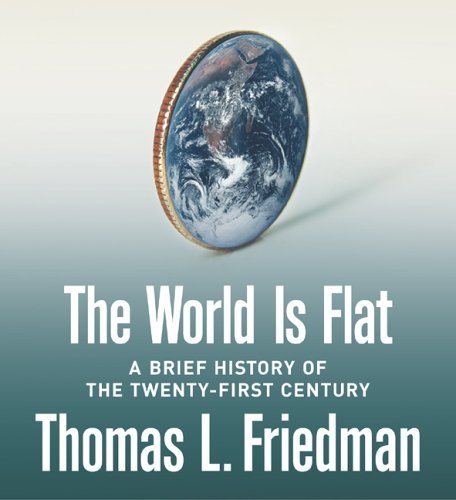“With Mad Men still in charge, ad campaigns miss the mark,” an editorial published this week in the Financial Times asserts.
Leave it to a fiscally conservative British publication to be spot-on about a particularly, but not uniquely, American challenge, in this post-Weinstein (Miramax), -Price (Amazon), and today, -Halperin (MSNBC) moment of sexual harassment revelations.
In health/care, women are key consumers, buyers and influencers, yet under-represented in the Mad Men demographic of senior advertising executives, as the data-driven FT essay points out.
So it’s especially heartening to find this month a few examples of empowering, inspiring ad campaigns getting health/care marketing to women right.
Here is the video of Philip “Energía de madre” from Philips. I closely track Philips here on Health Populi in digital health, and discussed their expanded offerings for the connected baby and nursery after CES 2018 here. This month, if you live in Argentina, it was time to celebrate Mother’s Day. In this campaign, Philips is calling out las madres to celebrate their awesome energy. Adweek covered the video campaign, noting that, “The goal of the campaign was both to understand how much energy could be produced [by women living in and wearing connected shoes], and to find ways to reuse it for others. But ‘Mother’s Energy’ also highlights something else—the sheer work it takes to raise little humans.” As one mom says in the video, “That energy comes from love. Love for my children, for my family and for what I do as well.”
Check out Philips Better Me, Better World portal where you can see and share more examples of digital health goodness.
“Boobs are jealous of feet in a spot that promotes comfier sports bras,” AdAge described in another spot-on campaign promoting a new-and-improved brassiere from Kalenji. This spot leverages the fact that running for women impacts more than our feet, a fact long-overlooked by (male) shoe designers and ad makers. So this ad called “Jealous Boobs” brings some health literacy to the fore, with humor, joy, and great design sense. Little Black Book published some of the research data on this issue: specifically, breast movement increases up to 15 cm while running, and while most women experience breast pain when running, nearly one-half do not take action to alleviate their pain. The ad suggests that a good sports bra is a useful Rx for dealing with this real-life problem.
“Blood Normal,” the edgiest of my three ads comes from Libresse, a women’s health brand that markets tampons and other personal care products. Here’s the portal for the #BloodNormal campaign. According to Campaign (UK), Libresse’s corporate strategy focused on “breaking taboos that hold women back,” according to Martina Poulopoti, the global brand communication manager for parent company Essity. “We are hoping this positive representation of periods will help women and men all over the world understand that periods are normal, and that by showing them more and in a positive context we will start to break the taboos,” she was quoted to say.
To that end, here’s another ad from Libresse about “getting real” during a period.
Health Populi’s Hot Points: Let’s get real, Libresse-style, about a key point here: that these three ads were developed for audiences largely outside of the U.S. We’re way past a tipping point in America where the nation must get real about women’s health and healthcare, which includes our children’s, too. Gender health inequity still pervades U.S. healthcare treatment and outcomes. Women have paid more for healthcare, and for poorer outcomes, for decades. I talked about this recently in my Huffington Post column, “The Gender Disparity of Taxes, Toys, Tech and Tampons.”
This is not to say that men in the U.S. have perfect health and healthcare. Sadly, a segment of middle-aged American men have experienced an upturn in preventable mortality, too. But women’s health inequity in the U.S. is a long, old story, and particularly persistent for women of color.
 Social determinants can/should go a long way to reducing health disparities, looking at income equality, transportation, food quality and security, safe and healthy housing. Health insurance security and health access (especially to evidence-based treatments, say, for heart disease), close this loop. These health-focused policies, baked into all public policy, can help to bend the cost-curve and flip disparities for both women and men, and for our kids.
Social determinants can/should go a long way to reducing health disparities, looking at income equality, transportation, food quality and security, safe and healthy housing. Health insurance security and health access (especially to evidence-based treatments, say, for heart disease), close this loop. These health-focused policies, baked into all public policy, can help to bend the cost-curve and flip disparities for both women and men, and for our kids.
In the meantime, I’m looking forward to “immigration” of these marketing ideas from outside the U.S. that educate, entertain, and empower women and their self-care. The health/care communications world may turn out to be flat, Thomas Friedman-style. With more women involved in all industries at senior levels, the day will come.





 Interviewed live on BNN Bloomberg (Canada) on the market for GLP-1 drugs for weight loss and their impact on both the health care system and consumer goods and services -- notably, food, nutrition, retail health, gyms, and other sectors.
Interviewed live on BNN Bloomberg (Canada) on the market for GLP-1 drugs for weight loss and their impact on both the health care system and consumer goods and services -- notably, food, nutrition, retail health, gyms, and other sectors. Thank you, Feedspot, for
Thank you, Feedspot, for  As you may know, I have been splitting work- and living-time between the U.S. and the E.U., most recently living in and working from Brussels. In the month of September 2024, I'll be splitting time between London and other parts of the U.K., and Italy where I'll be working with clients on consumer health, self-care and home care focused on food-as-medicine, digital health, business and scenario planning for the future...
As you may know, I have been splitting work- and living-time between the U.S. and the E.U., most recently living in and working from Brussels. In the month of September 2024, I'll be splitting time between London and other parts of the U.K., and Italy where I'll be working with clients on consumer health, self-care and home care focused on food-as-medicine, digital health, business and scenario planning for the future...